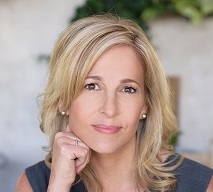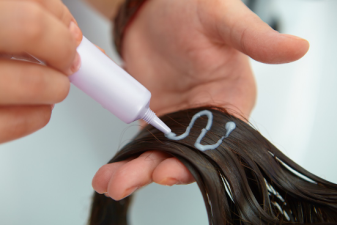Give Your Hair Care Brand a Digital Makeover 9/15/2015
Hair care represents the third-largest segment in the beauty marketplace; yet it’s just seventh in terms of online sales volume. Why? While analysts speculate that the higher-than-average ship-to weight ratio may be a handicap, they’ve also found that, for many brands, the lack of a well-developed multi-channel digital approach may be tangling sales.
L2’s Digital IQ Index analyzes the digital competence of brands in the US market, looking at their strengths and weaknesses across individual brand sites and e-commerce platforms, digital marketing penetration, social media strategy, and user mobile experience. The analysts examined 70 hair care brands, placing each into one of five categories: Genius, Gifted, Average, Challenged, and Feeble. While only three brands fell into the Genius category, 60% of brands fell squarely into the Gifted or Average category, indicating that these brands have ample opportunity for growth in key areas. Below, Women’s Marketing looks at some of the report highlights to learn where hair care brands can better optimize their digital strategies.
Brands with creatively engineered landing pages and websites that showcase product and offer robust content scored high in this category. Superior product reviews, customer testimonials, rich product curation, loyalty programs, auto-replenishment options, and extensive customer support were among the enhancements on the highly ranked sites. Robust e-commerce options include triggered abandoned cart messages and links to Amazon, Walmart, and other supported retailers.
Interestingly, while the report found that Amazon, Walmart, Sephora, and Target were among the top destinations for beauty products, only a handful of brands were linking directly to those sites. On-site links to local retailers or online beauty destinations could help brands drive additional sales at brick-and-mortar stores or partner sites. Brands were also evaluated on their brand visibility and merchandising across e-tailers. For example, while Living Proof had the highest brand visibility on ULTA and Sephora and a robust digital presence.
Brands that optimized for both paid and organic search earned high marks from analysts. In addition to brand keywords, analysts found the most successful brands optimized for category keywords and applicable subcategories (styling, treatment, color, etc…) that resulted in increased traffic and discoverability when consumers are seeking solutions to hair care dilemmas. L’Oréal’s search visibility ranked at number one in both paid and organic results, and Kérastase’s “Diagnose My Hair” tool provides an alternative, interactive discovery path.
Well-developed email campaigns that encouraged customer retention were applauded by analysts—but brands should be aware that too-frequent email offers can come close to spam, and are frowned upon by analysts and consumers alike. Robust email marketing programs blend incentives, rewards, samples, and rich product curation. Analysts were impressed with Aveda’s escalating opt-in tactics that encourage visitors to supply personal information, volunteer mobile numbers for SMS alerts, and review benefits of rewards programs. Although L’Oreal made a strategic decision not to engage in direct e-commerce on their site, they still send trigger emails to consumers that abandon purchase prior to a successful handoff to recommended e-tailers. The presence of account profiles and cart dynamics both on site and off, allow brands to engage in email tactics that typically prove off-limits to non-DTC brands.
While it’s essential to have a great website, driving traffic to the site through well-placed, strategic ad campaigns, is equally important. For example, Pantene’s strong TV and paid media strategy earned the brand the third most-watched YouTube brand channel in the analysts’ index. Bumble and bumble’s retargeting strategy and TreSemmé’s effective linking between off-site how-to content and pertinent product pages both earned high marks from analysts.
It should go without saying that, by now, brand websites should be optimized for mobile. According to keyword analysis of terms most closely associated with hair care brands, as many as 65% of relevant queries originate from smartphones and tablets. In terms of functionality, over 40% of mobile sites reviewed were missing features found on their desktop counterpart—the most common gaps are specific to video, user reviews, account access, and live chat support. As more consumers regularly utilize their smartphones to make purchase decisions in-store and use mobile phones for those “I want to know” micro-moments, brands gain when their mobile sites offer a full range of product information and content in mobile-friendly formats. Neutrogena’s “save online” or “save in store” coupon selection option, along with the ability to quickly find a store, complements an increased investment in “Expert Center” tutorials and content. Although most brands have recognized the importance of a responsive mobile design, pressure on holdouts is mounting and will likely cost them not only search optimization, but customers as well.
Today, even mid-size and emerging brands must be competitive and engage in the same marketing techniques as their well-established rivals. Employing a variety of marketing strategies, including digital, mobile, social, and cross-promotion with retail partners is essential to growth and, most likely, necessary for survival. Contact Women’s Marketing for a full review of your digital strategy and learn how our deep understanding of the beauty and haircare markets can help your brand shine.


Women’s Marketing is the leading media strategy, planning, and buying organization for emerging and high-growth brands. We offer a deep understanding of how women consume, engage, and take action with media, with unmatched expertise in beauty, health, fashion, food, and beverage. Every Women’s Marketing client enjoys the benefits associated with the significant purchasing scale we achieve through the vast network of companies we serve and our strong relationships with global media leaders.